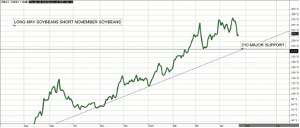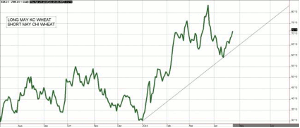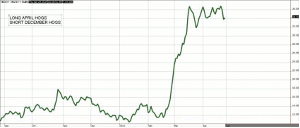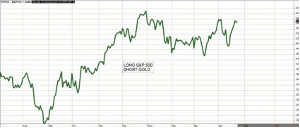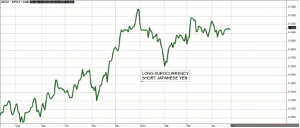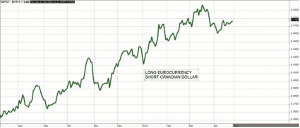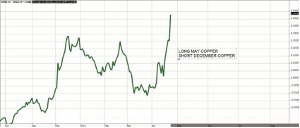Commodity spread trading has been around for a very long time and is sometimes referred to as "the best kept trading secret" on the trading floors of futures exchanges, writes Blake Robben of Archer Financial Services.
An intra-commodity spread is when a trader is simultaneously long and short the same commodity, but in different months. For example, an example of an intra-commodity spread would be long July soybeans, short November soybeans.
An inter-commodity spread would be simultaneously long and short two related commodities. For example, long ten-year Treasury notes and simultaneously short 30-year Treasury bonds.
Spread trading offers a way to participate in the futures market using less trading capital than outright (net long, or short) futures contracts. Typically, you will find the margin (good faith money deposited by a trader) to be about 50-75% less than net long, or short futures position margin.
Let's take a look at some popular spread trades:
May 14 Soybeans - November14 Soybeans
May 14 KC Wheat - May 14 Chi Wheat
April 14 Hogs - December 14 Hogs
June 14 S&P 500 - June 14 Gold
June 14 Euro Currency - June 14 Japanese Yen
June 14 Euro Currency - June 14 Canadian Dollar
May 14 Copper - December 14 Copper
Charts from QST
One of the secrets to spread trading is to be long the contract that has the strongest fundamentals and be short the contract that has the relatively weaker fundamentals. In addition, it is a good idea to be long the contract that has the steepest uptrend lines and short the contract that has trend lines that are less steep. When the relative fundamentals of each contact favorably compare with an analysis of trend lines, the probability of success is greatly enhanced!
By Blake Robben of Archer Financial Services

